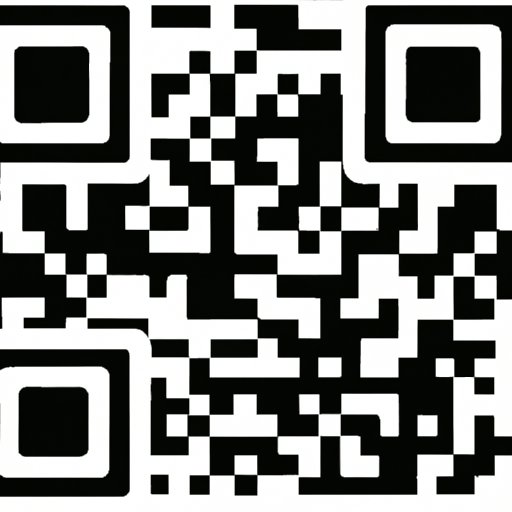
Introduction
QR codes are quickly becoming a popular way to store and share information. These two-dimensional barcodes can hold a significant amount of data, including website URLs, contact information, and even payment details. QR codes may seem complex, but creating them is surprisingly easy. This guide will provide a comprehensive overview of how to create QR codes, the various ways in which they can be used, and their potential in the future.
QR Codes Made Easy: A Step-by-Step Guide for Beginners
Creating your own QR code is a simple process that can be done in just a few steps. First, decide what type of information you want to encode. This could be a website URL, a phone number, an email address, or even text. Once you have this information, you can use a free online QR code generator tool to create your code. Simply input your data and click generate. Your code will be ready for use in seconds.
For those who want more flexibility with their QR codes, there are several software options available. These programs allow you to customize the appearance of your code and even add branding elements like logos and colors. Some popular QR code software options include QR Code Generator, Unitag, and QR Stuff.
When creating your QR code, there are a few best practices to keep in mind. First, ensure that your code is visually appealing and easy to scan. This means using high contrast colors and a clear design. Additionally, make sure your code is appropriately sized and placed in a location where it can be easily scanned. Finally, test your code before publishing it to ensure it is working correctly.
Unlock the Power of QR Codes for Your Business: Tips and Tricks
QR codes offer businesses countless opportunities for marketing and promoting their products and services. One of the most effective ways to use QR codes for marketing is to incorporate them into print and outdoor advertising. Adding QR codes to billboards, flyers, and posters allows potential customers to quickly and easily access more information about your business.
When creating QR codes for marketing purposes, it is important to make them visually appealing and eye-catching. Consider using bright colors, attractive designs, and even incorporating a call-to-action. Additionally, ensure that your QR code links to valuable content, such as a special offer or exclusive content.
Finally, it is important to track the performance of your QR codes. This allows businesses to gain insight into which codes are generating the most engagement and adjust their strategies accordingly. Google Analytics is a popular tool for tracking QR code performance.
QR Codes for Enhanced Safety Measures: Exploring Its Benefits and Applications
QR codes are not just useful for marketing and promotional purposes. They can also be used to improve safety measures in a variety of settings. QR codes are becoming increasingly popular for contact tracing, allowing public health officials to quickly and easily identify and notify those who may have been exposed to a contagious virus.
Additionally, QR codes can be used to provide quick access to emergency information. Hospitals and other organizations can create QR codes that link to vital patient information, allowing first responders to quickly access critical health information.
Finally, QR codes can enable touchless interactions and reduce the risk of transmitting germs. Grocery stores and other retailers can use QR codes to allow customers to access product information without having to touch physical displays.
QR Codes in Education: How It’s Revolutionizing the Learning Experience
QR codes have the potential to revolutionize the way we learn. Teachers can use QR codes to create interactive classroom activities, such as scavenger hunts and quizzes. Additionally, QR codes can be used to gamify the learning experience, making it more engaging for students.
QR codes can also be used to access additional learning resources, such as videos, podcasts, and online articles. This allows students to take a more personalized approach to learning and explore topics in greater depth.
QR Codes and Sustainability: A Modern Solution to Reduce Carbon Footprint
QR codes offer a sustainable solution to reducing paper waste and promoting digitalization. For example, restaurants can use QR codes in place of paper menus, reducing the amount of physical waste generated. Similarly, QR codes can be used to replace printed tickets and passes for events, reducing the need for paper and ink.
Businesses and organizations that incorporate QR codes into their operations can make significant contributions to sustainability efforts. By reducing paper waste and promoting more environmentally-friendly practices, QR codes can help businesses reduce their carbon footprint and contribute to a more sustainable future.
QR Codes: The Future of Authentication and Security?
QR codes can provide an added layer of security when used as a form of authentication. For example, some banks use QR codes to allow customers to log in to their accounts or perform transactions. This adds an extra step of verification and reduces the risk of fraudulent activity.
Additionally, QR codes can be used to secure personal information, such as medical records or confidential business information. This ensures that only authorized individuals have access to this sensitive data.
Conclusion
QR codes are a simple yet powerful tool that can be used in a variety of settings. From marketing and education to safety and sustainability, their potential is limitless. By incorporating QR codes into our daily lives, we can unlock the magic of this innovative technology and explore new ways of interacting with the world.
So, why not try creating your own QR code today? The possibilities are endless.




